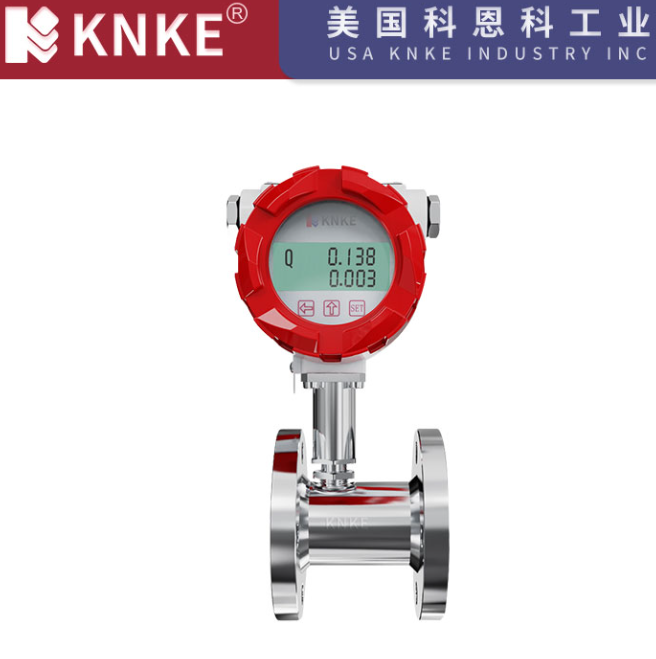Turbine Flowmeter Calibration Procedures
Turbine flowmeters, with their high precision, wide turndown ratio, and stability, play a crucial role across various industrial sectors, including oil and gas, chemical, energy, and metallurgy. However, like any measuring instrument, they can be affected by wear and tear, aging, and environmental changes, leading to a decline in measurement performance. To ensure the accuracy and reliability of turbine flowmeter measurements, regular calibration is paramount. Calibration is not just a necessary step in quality control; it’s also key to safeguarding production safety and enhancing economic efficiency.
Importance and Purpose of Calibration

Calibration procedures are technical documents that standardize the turbine flowmeter calibration process. Their primary objectives are:
- Ensure Measurement Uniformity: To guarantee that measurement results from turbine flowmeters used in different regions and by different organizations are comparable and consistent, conforming to national metrological standards.
- Guarantee Measurement Accuracy: To promptly identify and correct measurement errors in flowmeters, ensuring they operate within acceptable error limits. This prevents economic losses or safety hazards that could arise from inaccurate measurements.
- Assess Performance Status: Calibration provides a comprehensive understanding of the flowmeter’s operational status and wear, offering a basis for maintenance, repair, or retirement decisions.
- Comply with Regulatory Requirements: Many countries and regions have mandatory calibration requirements for flowmeters used in critical areas like trade settlement and safety monitoring.
Key Contents of Calibration Procedures
A comprehensive turbine flowmeter calibration procedure typically covers the following core aspects:
1. Calibration Conditions
- Environmental Conditions: Specifies requirements for ambient temperature, humidity, vibration, electromagnetic interference, etc., during calibration to prevent external factors from affecting the results.
- Medium Conditions: Clearly defines the type, temperature, and pressure of the calibration medium, ensuring it’s as close as possible to actual operating conditions to simulate real-world performance.
- Equipment Requirements: Details the accuracy class and calibration frequency of the standard devices and auxiliary equipment (e.g., thermometers, pressure gauges) needed for calibration.
2. Calibration Items and Methods
- Appearance Inspection: Checks the flowmeter’s casing, terminals, nameplate, etc., for damage or looseness to ensure physical integrity.
- Seal Test: Verifies that the flowmeter is leak-free under a specified pressure, preventing media loss that could affect measurement accuracy.
- Insulation Performance Test: For flowmeters with electrical components, this tests insulation resistance and dielectric strength to ensure electrical safety.
- Indication Error Calibration: This is the core of the calibration procedure. By comparing the flowmeter against a standard device, its indication error at various flow points is measured, and assessed against the specified requirements. This typically covers multiple flow points, such as:
- Maximum Flow Point: Calibrates the flowmeter’s performance at high flow rates.
- Common Flow Points: Simulates the flow ranges frequently encountered during actual operation.
- Minimum Flow Point: Evaluates the flowmeter’s sensitivity and accuracy at low flow rates.
- Repeatability Test: Multiple measurements are taken at the same flow point to assess the flowmeter’s repeatability error, reflecting its stability and reliability.
- Pressure Loss Measurement (Optional): Some procedures may require measuring the flowmeter’s pressure loss at different flow rates to evaluate its energy consumption characteristics.
3. Calibration Period and Result Handling
- Calibration Period: Clearly specifies the time interval for turbine flowmeter calibration, usually determined by factors like usage frequency, media characteristics, and criticality.
- Calibration Results: Detailed records of all calibration data are maintained, and the flowmeter’s conformity is assessed against calibration standards. Conforming flowmeters are issued a calibration certificate, while non-conforming ones require repair or downgrading for use.
- Data Processing: Specifies error calculation methods, rounding rules, etc., to ensure the scientific rigor and standardization of calibration results.
Key to Implementing Calibration Procedures
Effective implementation of turbine flowmeter calibration procedures requires collaborative efforts:
- Skilled Personnel: Calibration personnel must possess specialized metrological knowledge and operational skills, and be familiar with flowmeter principles and calibration procedures.
- Standard Devices: The standard devices used for calibration should be regularly calibrated and have a higher accuracy class than the flowmeter being tested.
- Strict Execution: The calibration process must strictly adhere to the procedures; steps should not be arbitrarily simplified or omitted.
- Record-Keeping and Archiving: Detailed calibration records are crucial for tracing and analyzing flowmeter performance and should be properly archived.
By strictly following turbine flowmeter calibration procedures, we can maximize the accuracy of flow measurements. This is invaluable for material metering, energy management, process control, and even trade settlement in industrial production. It’s not just a technical specification; it’s a vital guarantee for safe, efficient, and economical industrial operations.
